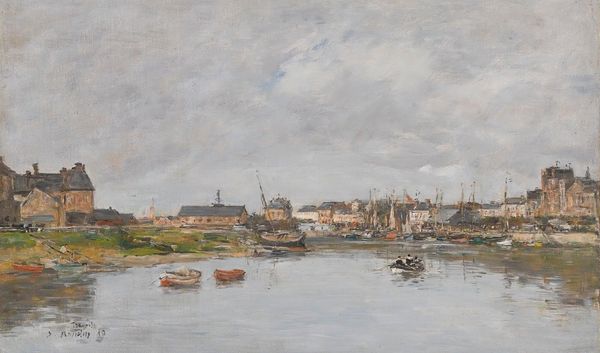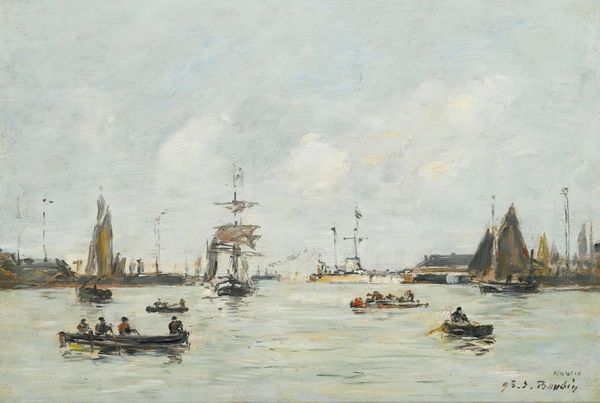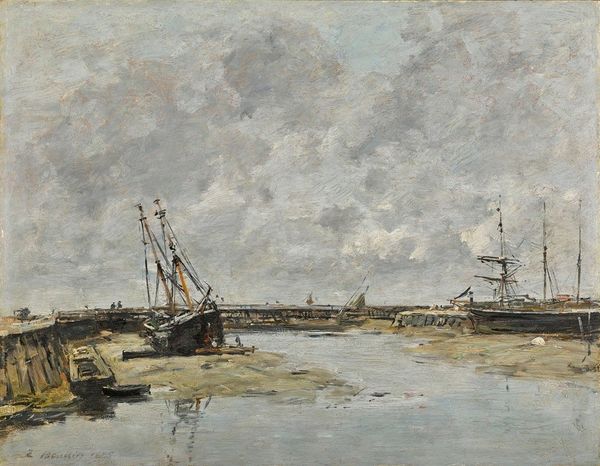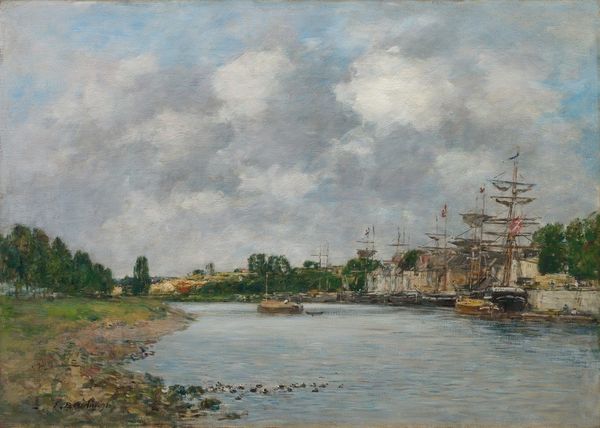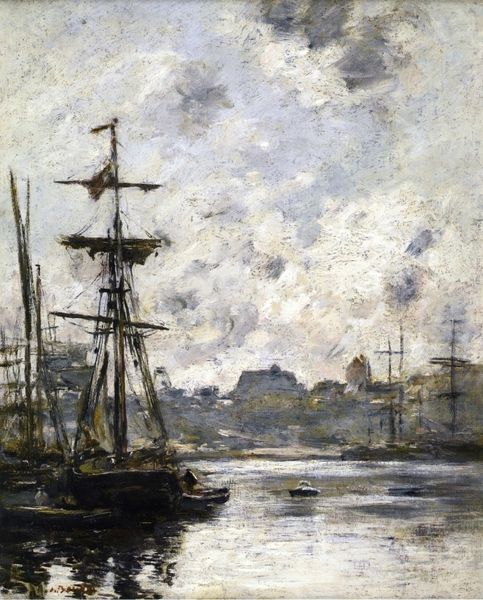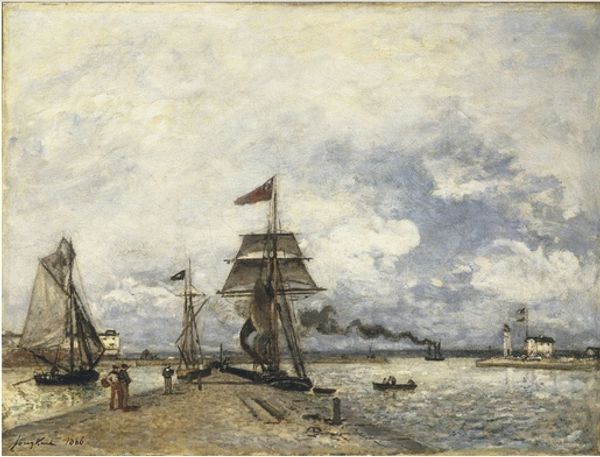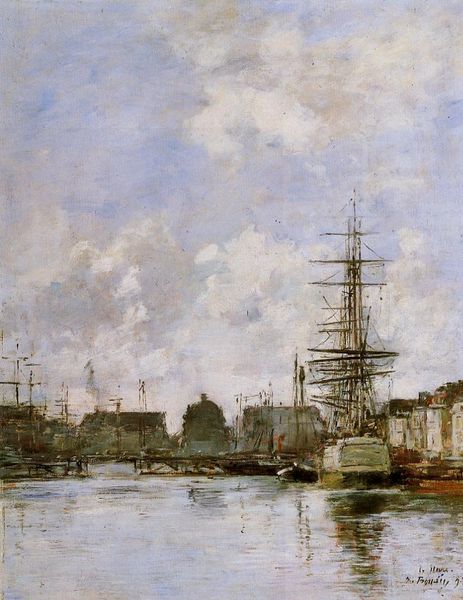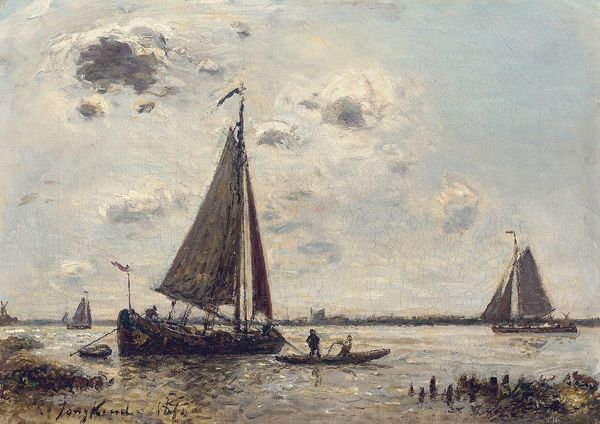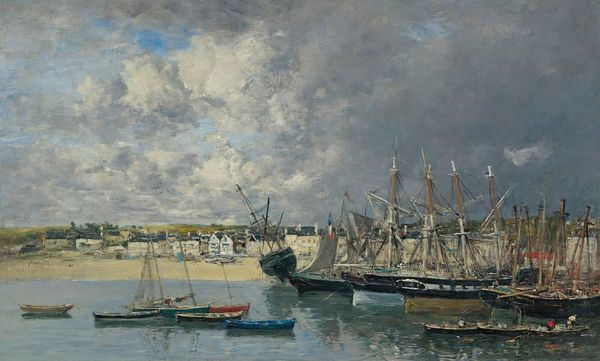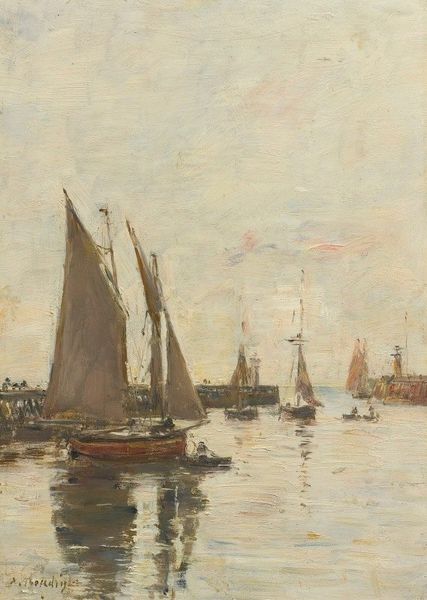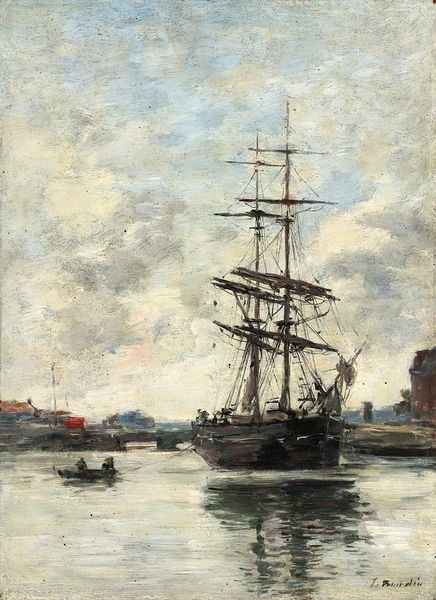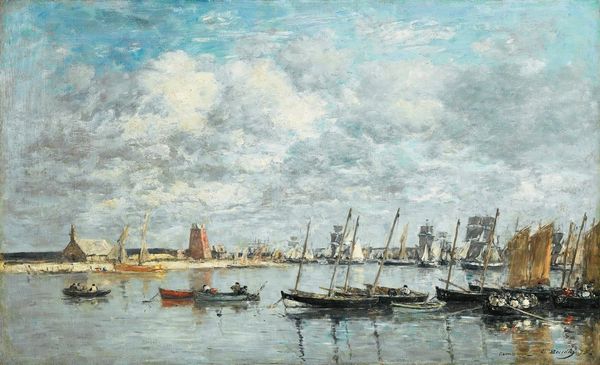
plein-air, oil-paint
#
impressionism
#
plein-air
#
oil-paint
#
landscape
#
oil painting
#
cityscape
#
watercolor
#
realism
Copyright: Public Domain: Artvee
Editor: So, here we have Johan Barthold Jongkind's "Entrance to the Port of Honfleur," painted in 1863-1864 with oil on canvas. There's a stillness to it despite the busy port scene, a balance between movement and tranquility. What do you see in this piece, considering the period and the subject? Curator: Well, I see a very potent combination of maritime power and civic pride subtly conveyed through its iconography. The French flag atop the ship, positioned centrally, is not just a national marker. It's a statement of dominance and prosperity. Think of flags—historically—as emblems of allegiance, promising protection and signifying territorial control. Editor: That makes sense. The flag really does draw the eye. Curator: Indeed. And look at the composition – the ships aren’t merely floating; they are framed by the architecture of Honfleur itself. Do you notice how the buildings on the right rise almost defensively, their facades acting like a bulwark? Jongkind is very intentionally setting the stage. Editor: Yes, almost like a stage set! It definitely evokes a feeling of national strength, though in a rather subtle, understated way. Was Jongkind known for embedding political commentary in his landscapes? Curator: Jongkind was more concerned with capturing atmosphere and light, however these artists worked in very politically charged environments. He presents us with symbols—ships, flags, architecture—that coalesce to form an unspoken narrative. The cultural memory embedded in such images spoke volumes to his contemporary audience, resonating with ideas of progress and national identity, an idealized projection for years to come. Editor: That’s fascinating! It’s so interesting how a seemingly simple landscape can carry such significant weight. Curator: Exactly. It reveals how profoundly imagery affects cultural memory, reminding us that what we see shapes what we believe.
Comments
No comments
Be the first to comment and join the conversation on the ultimate creative platform.
